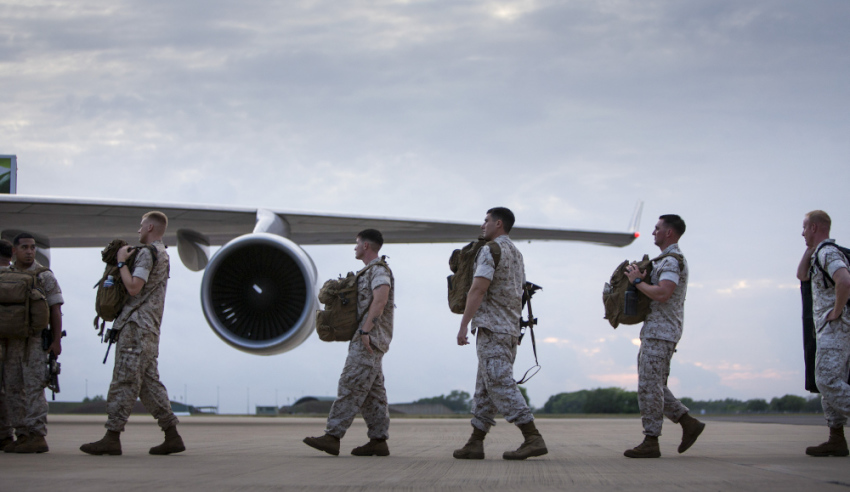The US Marine Corps Rotational Force - Darwin (MRF-D) has successfully wrapped its ninth rotational deployment, with planning well underway for next year's 10th alliance enhancing rotational deployment.
The MRF-D departed the Northern Territory after successfully undertaking a range of exercises, which strengthened co-operation and interoperability with the Australian Defence Force.
The US Marines arrived in a series of tranches and completed a mandatory 14-day quarantine, prior to starting their training; and were tested for COVID-19 on entry to Australia and a second time prior to exiting quarantine.
The rotation achieved significant joint training objectives and outcomes.
The first key activity, Exercise Loobye, saw US Air Force B-1 and B-2 bombers integrate with the Australian Army and the MRF-D in a highly advanced training activity, allowing both ADF and US forces the opportunity to practice their skills.
The second key activity, Exercise Koolendong, focused on a complex scenario, which progressed to high-end live-fire training, designed to build interoperability in support of the ADF and US Marines’ ability to respond to a range of crises in the region.
The modified MRF-D operated between June and October 2020 reached an approximate size of 1,100 personnel.
Planning is underway for the next year’s MRF-D, which will mark its 10-year anniversary.
The US Force Posture Initiatives are an extension of Australia’s existing Defence alliance with the US.
The objectives of the initiatives are to improve interoperability between Australian and US armed forces, provide opportunities to engage with partners in the Indo-Pacific, promote regional stability, and better posture both nations to respond to contingencies such as humanitarian assistance and disaster relief operations.
The initiatives are a key component of the alliance and include the MRF-D and Enhanced Air Cooperation.
The MRF-D sees a contingent of US Marines and their equipment rotate through northern Australia during the dry season. While in Australia, the MRF-D undertakes a range of activities, combined exercises and training with the ADF and regional partners.
The MRF-D has grown in size and complexity since the first rotation of 200 US Marines through Darwin in 2012, through to reaching the milestone of 2,500 Marines in 2019. It is now a highly capable force that provides significant opportunities to enhance interoperability with the ADF.
MRF-D composition will vary from year to year as a consequence of the activities being undertaken with the ADF and regional partners each year.
Due to COVID-19, the 2020 MRF-D rotation has been modified with strict measures in place to mitigate the risks of transmission. Approximately 1,200 US Marines will visit Australia, exercising exclusively at Defence training areas within the Northern Territory from June until September 2020.
During its rotation through northern Australia, the MRF-D conducts a range of activities that challenge its force composition and the range of equipment it brings each year.
Due to COVID-19, key activities planned for 2020 have been modified or postponed.



